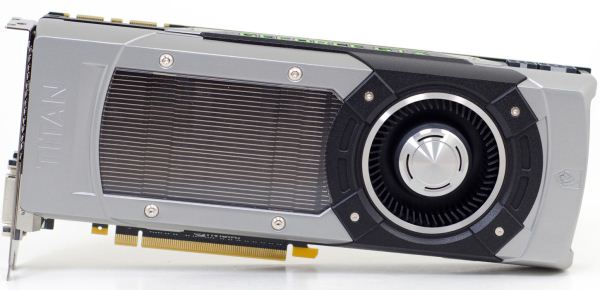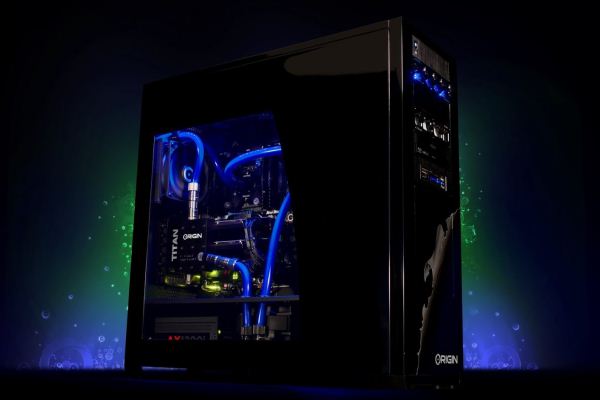NVIDIA’s GeForce GTX Titan Review, Part 2: Titan's Performance Unveiled
by Ryan Smith & Rahul Garg on February 21, 2013 9:00 AM ESTFinal Thoughts
Bringing things to a close, most of what we’ve seen with Titan has been a long time coming. Since the introduction of GK110 back at GTC 2012, we’ve had a solid idea of how NVIDIA’s grandest GPU would be configured, and it was mostly a question of when it would make its way to consumer hands, and at what clockspeeds and prices.
The end result is that with the largest Kepler GPU now in our hands, the performance situation closely resembles the Fermi and GT200 generations. Which is to say that so long as you have a solid foundation to work from, he who builds the biggest GPU builds the most powerful GPU. And at 551mm2, once more NVIDIA is alone in building massive GPUs.
No one should be surprised then when we proclaim that GeForce GTX Titan has unquestionably reclaimed the single-GPU performance crown for NVIDIA. It’s simply in a league of its own right now, reaching levels of performance no other single-GPU card can touch. At best, at its very best, AMD’s Radeon HD 7970GE can just match Titan, which is quite an accomplishment for AMD, but then at Titan’s best it’s nearly a generation ahead of the 7970GE. Like its predecessors, Titan delivers the kind of awe-inspiring performance we have come to expect from NVIDIA’s most powerful video cards.
With that in mind, as our benchmark data has shown, Titan’s performance isn’t quite enough to unseat this generation’s multi-GPU cards like the GTX 690 or Radeon HD 7990. But with that said this isn’t a new situation for us, and we find our editorial stance has not changed: we still suggest single-GPU cards over multi-GPU cards when performance allows for it. Multi-GPU technology itself is a great way to improve performance beyond what a single GPU can do, but as it’s always beholden to the need for profiles and the inherent drawbacks of AFR rendering, we don’t believe it’s desirable in situations such as Titan versus the GTX 690. The GTX 690 may be faster, but Titan is going to deliver a more consistent experience, just not quite at the same framerates as the GTX 690.
Meanwhile in the world of GPGPU computing Titan stands alone. Unfortunately we’re not able to run a complete cross-platform comparison due to Titan’s outstanding OpenCL issue, but from what we have been able to run Titan is not only flat-out powerful, but NVIDIA has seemingly delivered on their compute efficiency goals, giving us a Kepler family part capable of getting far closer to its theoretical efficiency than GTX 680, and closer than any other GPU before it. We’ll of course be taking a further look at Titan in comparison to other GPUs once the OpenCL situation is resolved in order to come to a better understanding of its relative strengths and weaknesses, but for the first wave of Titan buyers I’m not sure that’s going to matter. If you’re doing GPU computing, are invested in CUDA, and need a fast compute card, then Titan is the compute card CUDA developers and researchers have been dreaming of.
Back in the land of consumer gaming though, we have to contend with the fact that unlike any big-GPU card before it, Titan is purposely removed from the price/performance curve. NVIDIA has long wanted to ape Intel’s ability to have an extreme/luxury product at the very top end of the consumer product stack, and with Titan they’re going ahead with that.
The end result is that Titan is targeted at a different demographic than GTX 580 or other such cards, a demographic that has the means and the desire to purchase such a product. Being used to seeing the best video cards go for less we won’t call this a great development for the competitive landscape, but ultimately this is far from the first luxury level computer part, so there’s not much else to say other than that this is a product for a limited audience. But what that limited audience is getting is nothing short of an amazing card.
Like the GTX 690, NVIDIA has once again set the gold standard for GPU construction, this time for a single-GPU card. GTX 680 was a well-built card, but next to Titan it suddenly looks outdated. For example, despite Titan’s significantly higher TDP it’s no louder than the GTX 680, and the GTX 680 was already a quiet card. Next to price/performance the most important metric is noise, and by focusing on build quality NVIDIA has unquestionably set the new standard for high-end, high-TDP video cards.
On a final note, normally I’m not one for video card gimmicks, but after having seen both of NVIDIA’s Titan concept systems I have to say NVIDIA has taken an interesting route in justifying the luxury status of Titan. With the Radeon HD 7970 GHz Edition only available with open air or exotic cooling, Titan has been put into a position where it’s the ultimate blower card by a wide margin. The end result is that in scenarios where blowers are preferred and/or required, such as SFF PCs or tri-SLI, Titan is even more of an improvement over the competition than it is for traditional desktop computers. Or as Anand has so eloquently put it with his look at Falcon Northwest’s Tiki, when it comes to Titan “The days of a high end gaming rig being obnoxiously loud are thankfully over.”
Wrapping things up, on Monday we’ll be taking a look at the final piece of the puzzle: Origin’s tri-SLI full tower Genesis PC. The Genesis has been an interesting beast for its use of water cooling with Titan, and with the Titan launch behind us we can now focus on what it takes to feed 3 Titan video cards and why it’s an impeccable machine for multi-monitor/surround gaming. So until then, stay tuned.












337 Comments
View All Comments
CeriseCogburn - Sunday, February 24, 2013 - link
He's the jerk off liar you sucked up whole bud.chizow - Sunday, February 24, 2013 - link
At least he can put together a coherent sentence but compared to you, he looks like a saint.CeriseCogburn - Sunday, February 24, 2013 - link
you're his little altar boy, you should knowchizow - Monday, February 25, 2013 - link
Sounds like suppressed scars and emotions from a troubled past, you should see someone about that, can't be healthy for you. Might result in lashing out uncontrollably in public ...oh wait.CeriseCogburn - Tuesday, February 26, 2013 - link
LOL - The big hate filled price crybaby conspiracist, lashing out for near a year now, the OWS mirror must be extremely painful.CeriseCogburn - Thursday, February 21, 2013 - link
The crybaby fool liar amd fanboy has nothing else to offer but the exemplary issuing of brainfarts on a most regular basis, despite the corrections attempted by other for years on end.Forget the facts, the raging amd fanboy is blissful, but does not mean a word they say, either, and will never follow through.
A dry empty, stupid threat of nothing.
One can only hope the idiots grasp tightly on the rump cheeks of amd and never let go, thus when it falls into gehennna precious fanbioy will be gone with it too.
CeriseCogburn - Saturday, February 23, 2013 - link
They don't need your money they've got BILLIONS.AMD needs your money red fanboy, but then you don't have any to give them, as the amd fanboy tightwads have proven, they can destroy their own favorite company with their constant demand for free and cheap.
We don't want crybaby loser tightwads like you supporting nVidia. Your company is the in debt failing and fired amd. Enjoy the ghetto.
CeriseCogburn - Wednesday, February 27, 2013 - link
So nVidia is pulling in about 10% profit in the video card area, as recent and past years show.
So how exactly is that greed ? This whole past year of 600 series left them with that same pathetic profit margin.
They charge ten percent over their costs on average. Ten percent.
You people are obviously rage filled hate bots without a clue. Ten percent is not some unreasonable scalp price.
UzairH - Thursday, February 21, 2013 - link
I am upgrading shortly, and for me Skyrim is a big deal when it comes to graphics performance. Vanilla Skyrim plays great on GTX 580/HD 7850 and up, but one can load a dozen hi-res texture mods and high-quality ENB mod on top of Skyrim ot make it look an order of magnitude better than vanilla Skyrim, with a consequent massive performance drop. Skyrim is also a game that does not do SLI/Crossfire well,. so it would be interesting to see what a single powerful GPU can do in it.Ryan Smith - Thursday, February 21, 2013 - link
We've tested Skyrim with the high res texture pack and it's still CPU bound on high-end video cards. As for mods, as a matter of editorial policy we do not include mods in our testing due to the very frequent changes and relatively small user base.